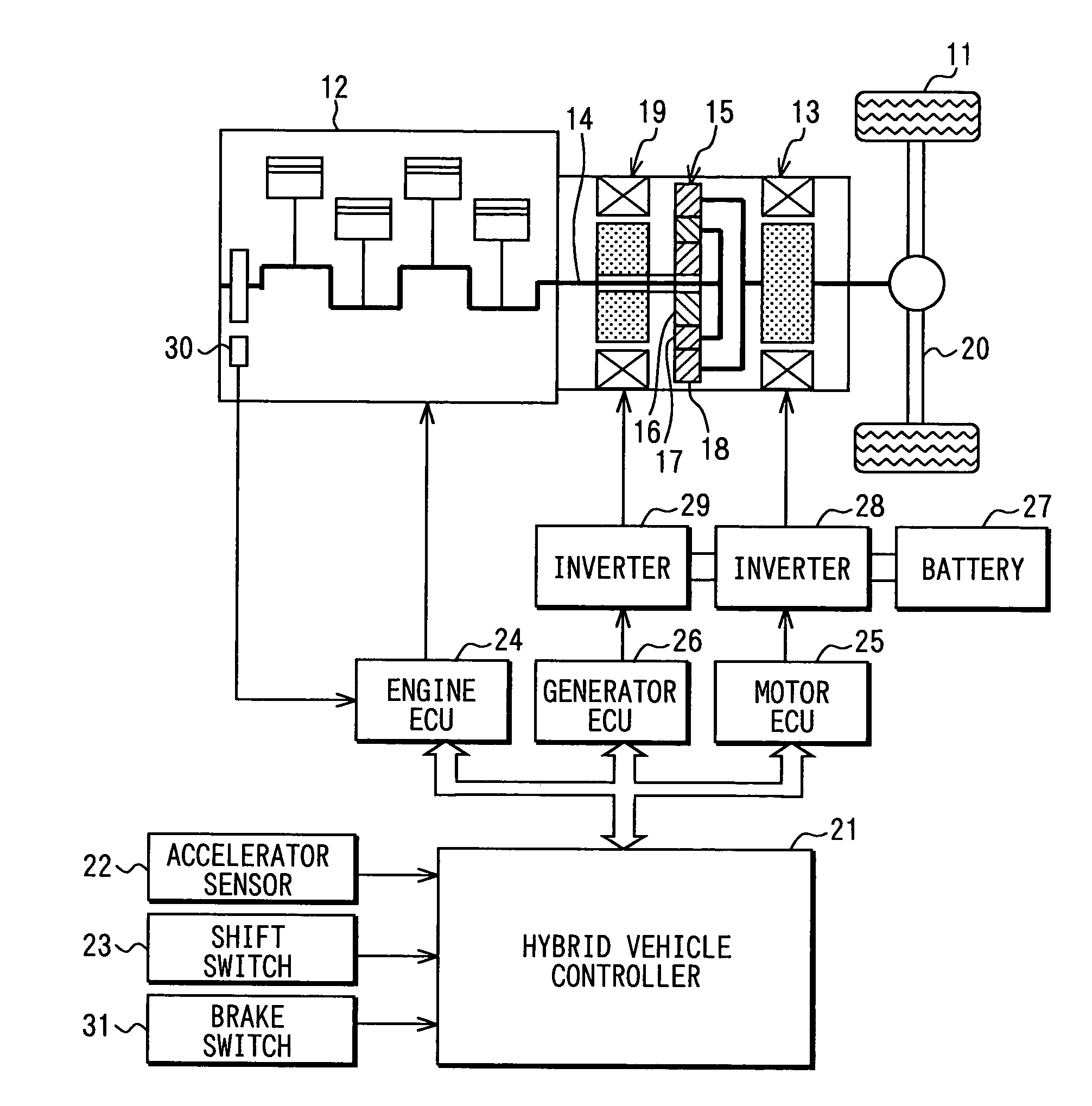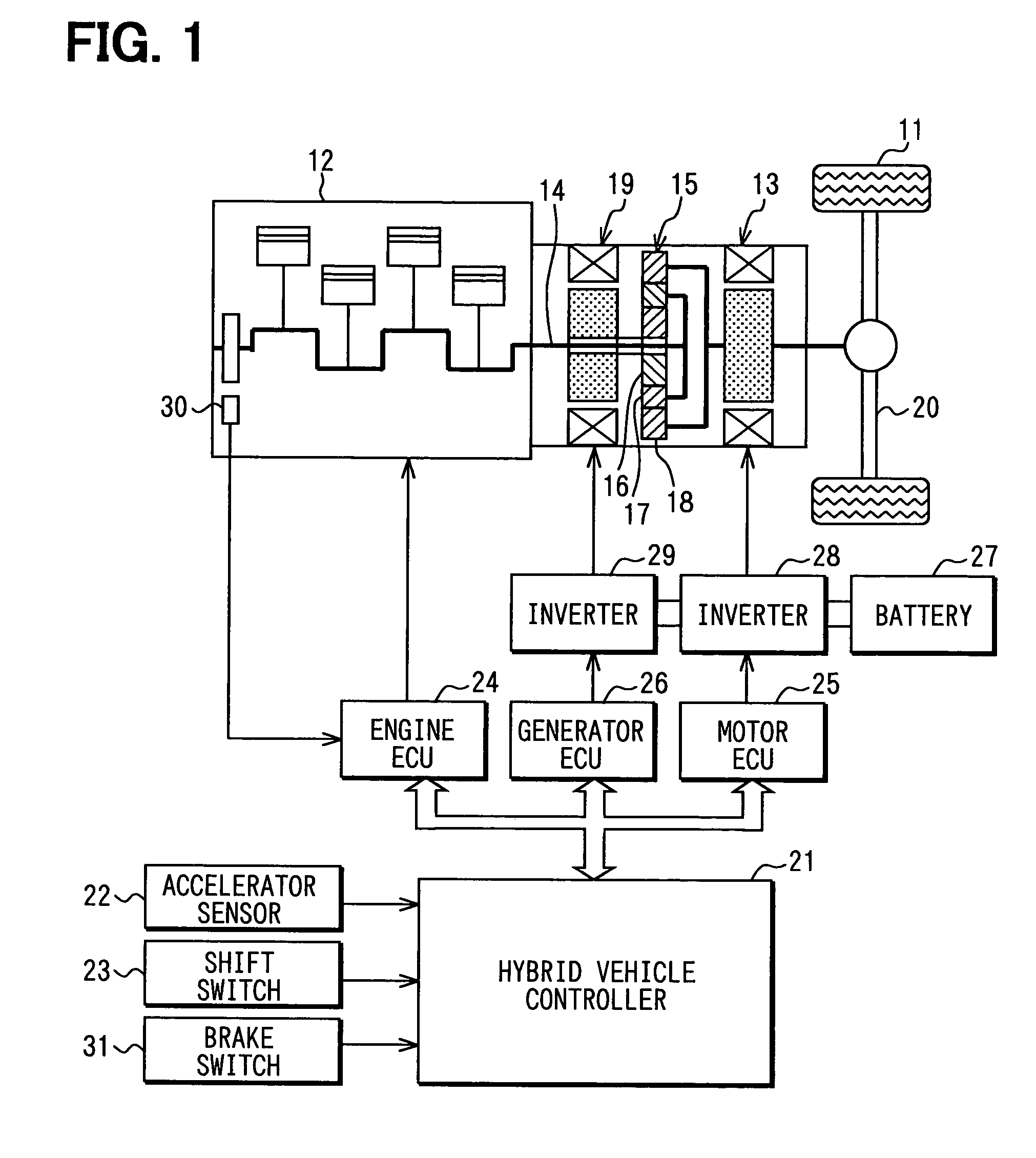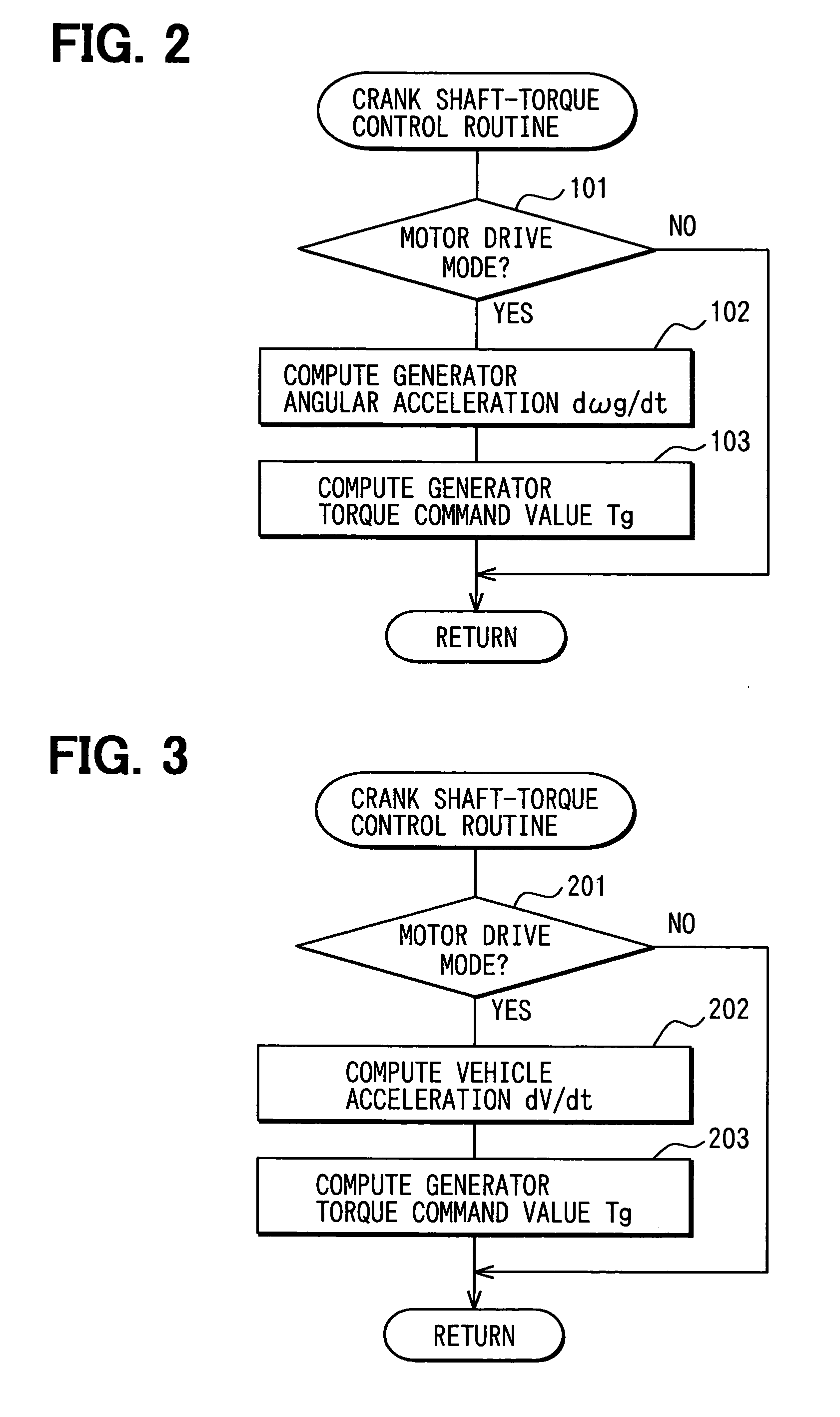Hybrid vehicle controller
a hybrid vehicle and controller technology, applied in the field of hybrid vehicles, can solve the problems of torque shocks felt by drivers, further increase in power consumption of high-voltage batteries, so as to improve the engine startup capability and reduce the capacity of high-voltage batteries mounted
- Summary
- Abstract
- Description
- Claims
- Application Information
AI Technical Summary
Benefits of technology
Problems solved by technology
Method used
Image
Examples
first embodiment
[0019]the invention will be described below with reference to FIGS. 1 and 2.
[0020]First, a drive system of a split-type hybrid vehicle will be described with reference to FIG. 1. As a power source for driving traction wheels 11 of the hybrid vehicle, the hybrid vehicle includes an engine 12 (an internal combustion engine) and a motor 13 (a motor generator). The power of a crankshaft 14 of the engine 12 is split into two drivelines through a planetary gear mechanism 15 which serves as power split means. The planetary gear mechanism 15 includes a sun gear 16 rotating at the center, a planetary gear 17 rotating on its axis and along the outer circumference of the sun gear 16, and a ring gear 18 rotating along the outer circumference of the planetary gear 17. The planetary gear 17 is coupled with the crankshaft 14 of the engine 12 via a carrier (not shown), the ring gear 18 being coupled with the rotational shaft of the motor 13, and the sun gear 16 being coupled with a generator 19 (a ...
second embodiment
[0035]The second embodiment follows a crankshaft-torque control routine of FIG. 3. In step 201, if the routine determines that the vehicle is currently in the motor drive mode, the routine proceeds to step 202, where a vehicle acceleration dV / dt indicative of a change in speed of the vehicle is computed. The vehicle acceleration dV / dt can be obtained by calculating over time a change in vehicle speed V sensed by a vehicle speed sensor (not shown). The processing performed in the step 202 serves as the vehicle speed change detection means which is defined in the appended claim.
[0036]Thereafter, the routine proceeds to step 203, where the inertia Jg of the generator 19 is multiplied by the vehicle acceleration dV / dt and a coefficient C to find the generator torque command value Tg by
Tg=Jg×C×dV / dt,
where C is the coefficient for converting the vehicle acceleration dV / dt into the angular acceleration dωg / dt of the generator 19.
[0037]The second embodiment described above can also provide...
third embodiment
[0039]The third embodiment follows a crankshaft-torque control routine of FIG. 4. In step 301, if the routine determines that the vehicle is currently in the motor drive mode, the routine proceeds to step 302, where the rotation sensor or the like senses an angular speed of the motor 13 (motor speed) ωm. Then, in step 303, the angular acceleration dωm / dt of the motor 13 is computed. The processing performed in the step 303 serves as the motor speed change detection means which is defined in the appended claim. Thereafter, the routine proceeds to step 304, where an angular speed of the generator 19 (generator speed) ωg is sensed. Then, in step 305, the angular acceleration dωg / dt of the generator 19 is computed. The processing performed in the step 305 serves as the generator speed change detection means which is defined in the appended claim.
[0040]Thereafter, the routine proceeds to step 306, where using the angular acceleration dωm / dt of the motor 13, the angular acceleration dωg / d...
PUM
 Login to View More
Login to View More Abstract
Description
Claims
Application Information
 Login to View More
Login to View More - R&D
- Intellectual Property
- Life Sciences
- Materials
- Tech Scout
- Unparalleled Data Quality
- Higher Quality Content
- 60% Fewer Hallucinations
Browse by: Latest US Patents, China's latest patents, Technical Efficacy Thesaurus, Application Domain, Technology Topic, Popular Technical Reports.
© 2025 PatSnap. All rights reserved.Legal|Privacy policy|Modern Slavery Act Transparency Statement|Sitemap|About US| Contact US: help@patsnap.com



